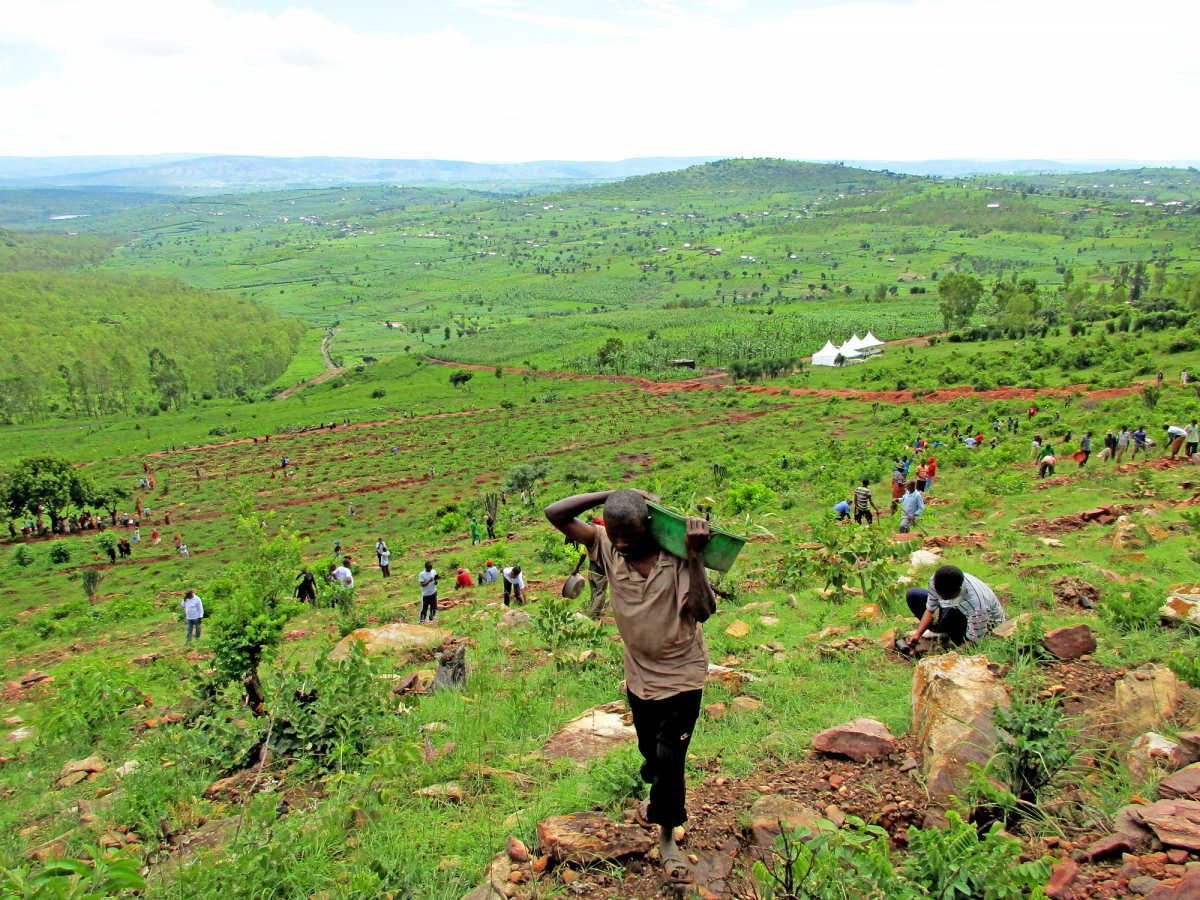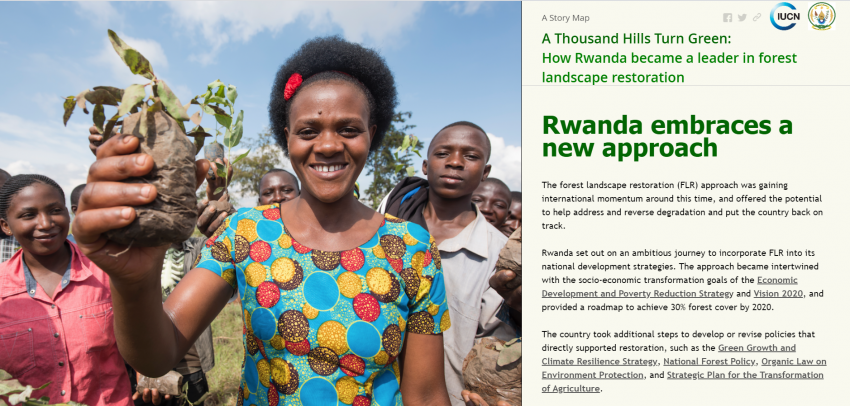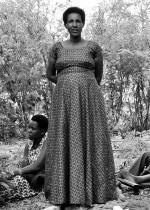How Rwanda became a restoration leader
Rwanda is the Land of a Thousand Hills, but are these hills still healthy and productive? This is the story of how a small east African country took the unprecedented initiative to restore lands that had lost the ability to support people and biodiversity.

Photo: IUCN / Donatha Dukuzumuremyi
The people of Rwanda aspire for a greener future. This is where the story begins.
Rwanda’s restoration story starts here.
 Photo: IUCN
Photo: IUCN
 Photo: IUCN
Photo: IUCN
Thanks to Rwanda's vision and forward-thinking laws and regulations, the country became one of the early adopters of the Bonn Challenge - a global effort to bring 150 million hectares of the world’s deforested and degraded land into restoration by 2020, and 350 million hectares by 2030.
In 2011, Rwanda was the first country in Africa to pledge to restore land as part of the challenge. Although not a large country, Rwanda set the ambitious goal of bringing two million hectares of deforested and degraded land into restoration by 2020. Later, the country continued to demonstrate its leadership through the highly successful African Forest Landscape Restoration Initiative or AFR100, a regional platform of the Bonn Challenge.
By adopting forest landscape restoration as a strategy to reverse widespread degradation and reanimate the natural power of ecosystem goods and services - such as improved water supplies and agricultural productivity - Rwanda garnered donor support as well as private investment to fulfil its border-to-border pledge.
Investing from border-to-border
With a strong policy framework in place and the assessment of opportunities for forest landscape restoration complete, it was time to act. From the eastern semi-dry areas near Akagera National Park to the western part of the country including Gishwati-Mukura National Park, 80 restoration projects have been implemented nationwide since 2011.
Over this period, Rwanda quadrupled domestic investment in landscape restoration. As of 2018, a combined domestic and international investment of US$ 6.7 million made nearly 35% of the country's two million hectare restoration ambition a reality.
 Photo: IUCN / Craig Beatty
Photo: IUCN / Craig Beatty
A decade of change we can see
By comparing forest cover data from 2009 to 2018, a strong trend in forest growth becomes clear. Forests now cover about 30.5% of Rwanda. A breakdown of this cover shows that 48.4% is plantations, 25.4% wooded savannahs in the east, 17.5% natural montane forests, and 8% shrub lands.That's progress we can measure.
Maintain the momentum
Rwanda has made great strides in restoring its degraded and deforested landscapes. Maintaining this momentum is vital. Although forest landscape restoration is well integrated into policies, gaps in implementation and investment remain. Closing these gaps requires effort from not only the government, but also the private sector, local communities and the restoration community.
A model for others
With the UN Decade on Ecosystem Restoration (2021-2030) set to begin, Rwanda's investment in the legal frameworks to implement sustainable natural resources management and commitment to restore two million hectares of deforested and degraded land are a clear model to inspire others around the world.
Story map produced by: IUCN in partnership with the government of Rwanda
Story map team: Corbett Nash, Salete Carvalho, Leander Raes, Alan Ndoli, Charles Karangwa, Ephrem Imanirareba, Joseph Njue, Nicolas Lachance-Bernard and David Toovey
